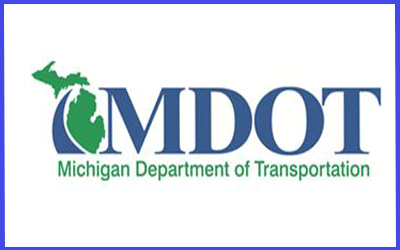
December Marks Worldwide Food Service Safety Month
|
|||
|

|
|||
|

|
|
|
|

FOR IMMEDIATE RELEASE Contact: Ron Leix, Treasury, 517-335-2167 Treasury: Fraudsters Using Fake Letters in Collections ScamTreasury Works with Taxpayers to Resolve Outstanding DebtLANSING, Mich. – Michigan taxpayers with past-due tax debts should be aware of an aggressive scam making the rounds through the U.S. Postal Service, according to the Michigan Department of Treasury (Treasury). In the scheme, taxpayers receive a letter about an overdue state tax bill that requests individuals contact a toll-free number to resolve the debt. The letter threatens to seize a taxpayer’s property — including bank accounts, wages, business assets, cars, real estate, refunds and cash — if the debt is not settled. The piece of correspondence appears credible to the taxpayer because it uses specific personal facts pulled directly from the internet and public records, as well as has an official-looking “DR-1024” form number. The scammer’s letter attempts to lure the taxpayer into a situation where they could make a payment to a criminal. “Scammers have been circulating these fake letters in the mail across the country,” said Deputy State Treasurer Kavita Kale, who oversees Treasury’s Revenue Services programs. “The state of Michigan works collaboratively with individuals to find solutions to their outstanding state debts. If you receive an aggressive and threatening letter, please contact Treasury directly so we can log the scam, clarify your state debt status and discuss options.” Treasury corresponds with taxpayers through official letters that use state of Michigan letterhead that embody both the names of the governor and state treasurer. These official letters are sent through the U.S. Postal Service, provide several options to resolve an outstanding debt and outline taxpayer rights. Taxpayers who receive a letter from a scammer or have questions about their state debts should call Treasury’s Collections Service Center at 517-636-5265. A customer service representative can log the scam, verify outstanding state debts and provide flexible payment options. To learn more about Michigan’s taxes and the collections process, go to www.michigan.gov/taxes or follow the state Treasury Department on X at @MITreasury. |

 |
| FOR IMMEDIATE RELEASE December 19, 2024
|
MEDIA CONTACT Jocelyn Garza 989-245-7117 GarzaJ10@Michigan.gov |
MDOT reflects on 2024 accomplishments, including improved safety, technology, flex routes and more
LANSING, Mich. – As the 2024 construction season comes to a close, the Michigan Department of Transportation (MDOT) has produced a video to reflect on a record year, with more than $3 billion invested to improve safety, mobility and technology of our roadways across the state. The video can be viewed at www.youtube.com/MichiganDOT.
Gov. Gretchen Whitmer’s Rebuilding Michigan program continues to rebuild the state highways and bridges (I, M and US routes) that are critical to the state’s economy and carry the most traffic. The investment strategy is aimed at fixes that result in longer useful lives and improves the condition of the state’s infrastructure.
“I want to acknowledge the hard-working men and women who make these crucial infrastructure improvements,” said State Transportation Director Bradley C. Wieferich. “MDOT employees and contractors give their all each day to improve mobility, accessibility and safety for all road users, and we’ll continue striving for excellence into the new year.”
In MDOT’s Bay Region, crews removed a temporary bridge installed shortly after the M-30 bridge over the Tobacco River was washed away in a historic flooding event. In its place, a new $12.4 million permanent bridge structure now connects Midland and Gladwin counties.
“I just want to thank MDOT, thank the contractors, thank everyone,” said Karen Moore, chairperson of the Gladwin County Board of Commissioners. “It takes time. This is obviously done right, it’s beautiful. The pedestrian walkways are going to give safe access.”
Across the Upper Peninsula and the northern Lower Peninsula, safety was at the forefront of projects, with road diets and roundabouts helping to calm traffic and relieve congestion. The intersection at US-41/M-28 and Lakeshore Drive in Ishpeming now features a new roundabout aimed at reducing crashes and improving driver safety. A road diet on M-55/I-75 Business Loop in West Branch reduced traffic from four and five-lane sections down to three lanes. The $14.3 million investment rebuilt the roadway while providing new sidewalk ramps, a shared use path, curbs and gutters, and served as an opportunity for the community to beautify their business district.
“It’s always hard to go through it, because of course, yes, it impacts traffic per se, customer traffic, but it was so much needed,” said Samanth Fabbri, a local business owner. “We had infrastructure that had to happen and our town chose to make it an opportunity and make changes and updates. We took it as an opportunity to make our town even better than it is.”
Also in northern Michigan, a $24.7 million investment rebuilt US-31/M-72 (Grandview Parkway), improving the heavily traveled route through the thriving business district and tourist destination of Traverse City.
“This is an amazing project we’re so excited about here in Traverse City,” said Traverse City Mayor Amy Shamroe. “This is a completely different, once-in-a-generation transformation of our downtown and the artery that puts people not only into Travere City when they come to visit, but also our surrounding areas like Sleeping Bear National Park and all these other places we know people love to come and visit, and we ourselves as locals really love. It’s just making a much better experience to get there both by car, but also the improvements that we’re making to make all of the town accessible.”
A $205 million Rebuilding Michigan initiative is underway in Lansing as crews completed the first part of Phase Two of rebuilding US-127/I-496 in Ingham County. This project is rebuilding 3.7 miles of highway, while addressing several bridges from I-96 to I-496, improving safety and drainage along the route. Through 2024, work was completed along northbound US-127/I-496, with crews moving to the southbound side starting this spring. The project supports more than 2,500 jobs across the Lansing area.
“Infrastructure improvement is hugely important,” said Lansing Mayor Andy Schor. “We’ve been pushing for infrastructure improvement for years, so seeing the state being able to fix some of our major roads, especially US-127, it’s hugely important. We want to make sure the roads are quality, that they’re good, that they’re safe.”
Rebuilding Michigan funds brought a $269 million investment to Oakland County, leveraging technology to help manage traffic and reduce congestion, as MDOT’s second Flex Route in the state is set to begin operations in early 2025. The I-96 Flex Route project improved 12 miles of roadway, rebuilding shoulders along I-96 from Kent Lake Road to the I-275/I-696/M-5 interchange and includes eight new metering ramps. Drivers will soon be able to reference digital signs indicating if the lane is available for use, along with suggested speed limits to reduce backups.
Amanda Downs, director of hospitality and events at Ford’s Garage, noted that the since construction was completed, business is continuing to increase and her own commute has already improved. “It’s great to drive on smoother roads and we’re looking forward to the Flex Lane opening and making that commute in the morning and home in the evening a lot smoother with less traffic.”
A two-year, $51 million investment (funded in part by Rebuilding Michigan) completed 13.4 miles of improvements along US-131 from Three Rivers to Schoolcraft in Kalamazoo County. Work focused on driver and pedestrian safety, rebuilt the US-131 intersection at Shaver Road to include a Michigan Left, improved sidewalks and curb ramps, and added a new pedestrian crossing signal at Eliza Street.
“The US-131 project, I think, was a great project for the community,” said Cheri Lutz, village manager in Schoolcraft. “It certainly alleviated a lot of potholes, plus provided a nice smooth route through the village of Schoolcraft, which enhances the businesses on US-131. Everybody, now that it’s complete, is very happy with the project.”
More project information is available on the MDOT website.

|
|
|